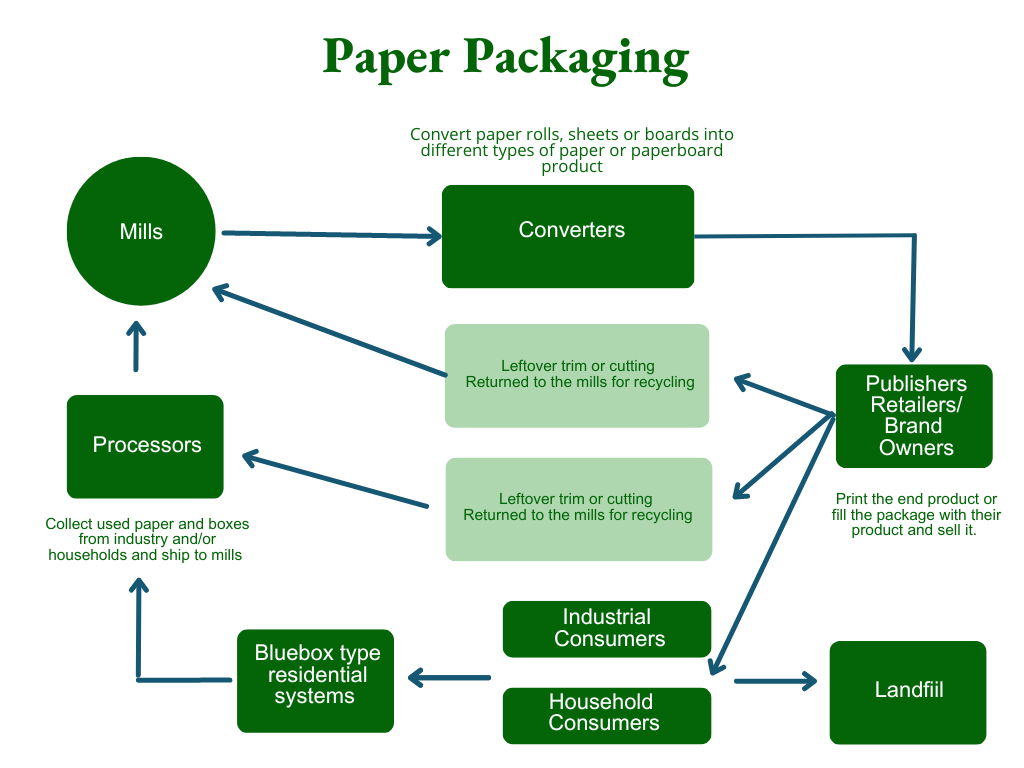The production cycle begins with pulp, either virgin, recycled, or a blend of the two. In Canada, used recycled pulp (old boxes and other used paper material collected from the back of factories, supermarkets and office buildings, and from curbside, apartments, and drop-off depots) is mostly used. This used paper material, or recovered fibre, is baled and sent to a mill for pulping. It is here that it is transformed into the type of board or paper that the particular mill specializes in (e.g., linerboard or corrugating medium (or both) to produce what’s collectively called containerboard, boxboard, or kraft paper.
The pulp is dropped into a pulper, which acts like a big washing machine. Non-paper materials, such as plastic, glass and metals are removed through a series of cleaning and screening processes. The paper fibres are then pumped onto a fast-moving screen to form paper or board. The rest of the process involves removing the moisture so that it can be wound into big rolls or cut into sheets.
These rolls and sheets are then shipped to a converter or a box plant. Containerboard is converted into corrugated boxes; boxboard into boxboard or paperboard cartons; and kraft paper into paper bags or sacks.
There are many more converting facilities (box plants) than mills across around the country to ensure they are close to their customers. Converters print, slot, crease, fold and glue the board, and send it on to a packer or the customer to be filled with product. Any waste material from the converting process (such as corrugated cuttings or boxboard trim) is collected on-site and sent back to a mill for further recycling.
Subscribe to our communications
Sign up to receive PPEC's blog and updates.

